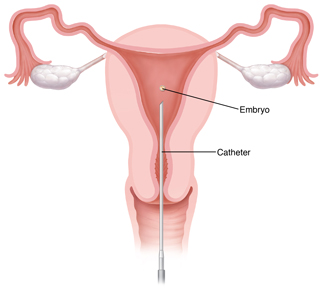In vitro fertilization (IVF) is a fertility treatment that involves the union of eggs and sperm outside the body in a laboratory. A fertilized egg (embryo) is then placed in the uterus to grow. In most cases, IVF is done with hormone medicines. These help to increase the chances of success. IVF requires several specific steps.
IVF is used by individuals seeking help in achieving pregnancy. It stands as a successful form of assisted reproductive technology (ART). Talk with your health care provider. They can tell you more about the details, success rates, and costs of IVF.
How IVF works
There are four main steps during IVF:
-
Hormone medicine is used to stimulate the ovaries. This helps them to produce two or more mature eggs.
-
The mature eggs are taken from the ovaries. You will be given medicine (sedation). This is so you won't feel pain. Your health care provider guides a thin needle into your vagina. This is done with the help of ultrasound.
-
The eggs are combined with sperm in a lab. If needed, one sperm can be injected directly into an egg. This is called intracytoplasmic sperm injection (ICSI).
-
A few days later, one or more embryos are placed into your uterus. For many people, the chance of pregnancy with one embryo is excellent. This reduces the risk of a multiple pregnancy. A multiple pregnancy means two or more babies.
Freezing embryos
Many embryos are created during an IVF cycle. But not all are placed in the uterus. The rest may be frozen for later use. This means you don't have to do another cycle of egg retrieval. It is also less costly.


